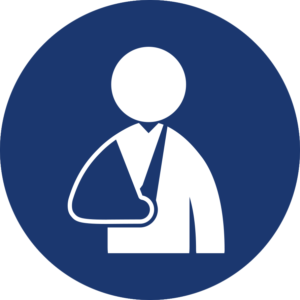Limiting Your Worker’s Compensation Costs
9 Ways to limit your workers compensation costs.
By: Allen Financial Insurance Group
Contact us for a no obligation worker’s compensation insurance quote today
Workers’ Compensation Insurance Purchasing Guide
Businesses that have employees should have a workers’ compensation policy. Workers’ compensation insurance provides benefits for employees if they are injured or become ill as a result of their employment. In addition, it provides a vale of liability protection for the employer. In fact, most states require the coverage in some fashion. We’ve highlighted just a few of the ways you can make your business a healthier environment for your employees. For more detailed information on these topics, visit our Workers Compensation page.
- Require employees to report all accidents or illnesses immediately.
The sooner you get prompt, appropriate care for injured or ill employees, the sooner they’re likely to recover and return to work, the less likely they are to sue, and the lower your costs will be.
Action Step: Make sure your workers’ compensation insurance provider offers a toll-free number or online capabilities for claim reporting, as well as easy access to a network of healthcare providers who specialize in treating occupational illnesses and injuries.
See how AFIG helps its insureds reduce workers’ compensation claim costs.
2. Focus on getting injured employees back to work quickly and safely.
Studies show that the longer injured workers stay off the job, the less likely it is that they’ll ever get back to work. Worse yet, injured workers tend to stay off the job three to four times longer than is medically necessary.
Action Step: Establish a formal return-to-work program that’s tailored for your organization. This will let your injured workers know that you support their early return to work, even if they must come back initially for lighter duties, part-time responsibilities, or transitional jobs. The sooner they reconnect with their associates and their responsibilities, the healthier their outlook and yours will be.
3. Control employees’ exposure to workplace contaminants.
Fine dust. Noxious gases. Loud noises. Toxic chemicals. Exposure to any of these can be more than irritating, it can be a hazard to your employees’ health.
Action Step: Make sure that chemicals are properly stored in approved safety containers and cabinets. Check to make sure that any gases, dust, or fumes do not exceed OSHA’s Permissible Exposure Levels (PEL) or the American Conference of Governmental Industrial Hygienist’s Threshold Limit Values (TLV®), whichever is lower


Today, more than half of all workplace injuries are caused by “cumulative trauma disorders” or CTDs, meaning discomfort, pain and physical impairment that are caused by repetitive motions and exertions. (Carpal tunnel syndrome, for example, is a CTD.)
Action Step: Make sure your managers know that improving ergonomics isn’t just a “nice-to-consider,” it’s a “must-to-do.” Start by watching your employees in action, noting any awkward postures or repetitive actions. Then work with your employees to see how, together, you can reduce the stress and strain of those operations. Consult a Certified Professional Ergonomist (CPE) for assistance in evaluating and reducing ergonomic risks.
5. Make safety everyone’s job.
You alone cannot ensure the safety of each worker. You need the full support and cooperation of all your employees.
Action Step: Let your employees know that you welcome suggestions about how to make the workplace safer for everyone. Award and recognize safe operations. Make safety discussions a regular agenda item at your employee meetings. Consider setting up Employer/Employee Committees in your company.
6. Evaluate the air quality in your building.
Being proactive about the quality of the air in your building makes good business sense, and allows you to respond to employee concerns quickly and effectively.
Action Step: If you lease your business space, consider working with the building owner to initiate a proactive evaluation of your building’s heating, ventilating, and air-conditioning (HVAC) Take every employee or visitor’s complaint seriously, document the complaint, and investigate appropriately. Consult a Certified Industrial Hygienist for practical advice about indoor air quality, evaluating the air in your workplace and specific contaminants of concern.
Do your employees lift or handle materials often? If so, you can reduce their risk of injury be providing training and proper equipment. Back injuries account for a staggering number of sick days each year, second only to those attributed to the common cold.
Action Step: Teach your employees how to lift safely. Provide hand trucks, or other mechanical aids and teach employees how to use these tools safely. If your employees use equipment to move materials, regularly assess that equipment. Is it adjustable for different workers? Is it the best technology available? Is it well maintained? Is it appropriate for the task? Review the areas where these operations tend to take place. Are they well lit and well ventilated? Can employees stay comfortable while they work?
8. Minimize the risk of slips and falls.
Innocent sounding slips, trips and falls account for more than 10% of occupational injuries which cause employees to miss work.
Action Step: To minimize the risk of tragic slips and falls, consider these six steps: 1) keep the walking surfaces, inside and outside of your facilities, in top condition; 2) encourage your workers to take special care when working on ramps, stairs, or ladders; 3) cover and mark any holes in the ground or floor; 4) maintain floors properly so they don’t become slippery; 5) keep your workplace free from clutter, which often causes trips and falls; and 6) install railings, gates, etc., on stairs, ramps, and walkways.
9. Use proper machine guards to protect employees.
If your business uses any machinery, it’s critical that you install appropriate safeguards to protect employees who operate equipment.
Action Step: Regularly inspect each piece of equipment and its safeguards. Check to be sure that appropriate safeguards are installed, up-to-date, and functioning properly. Make sure that those safeguards are designed to enhance productivity while providing adequate protection, and verify that both the equipment operators and passersby are protected. Instruct employees that they must never remove or disable guards or other protective devices.


